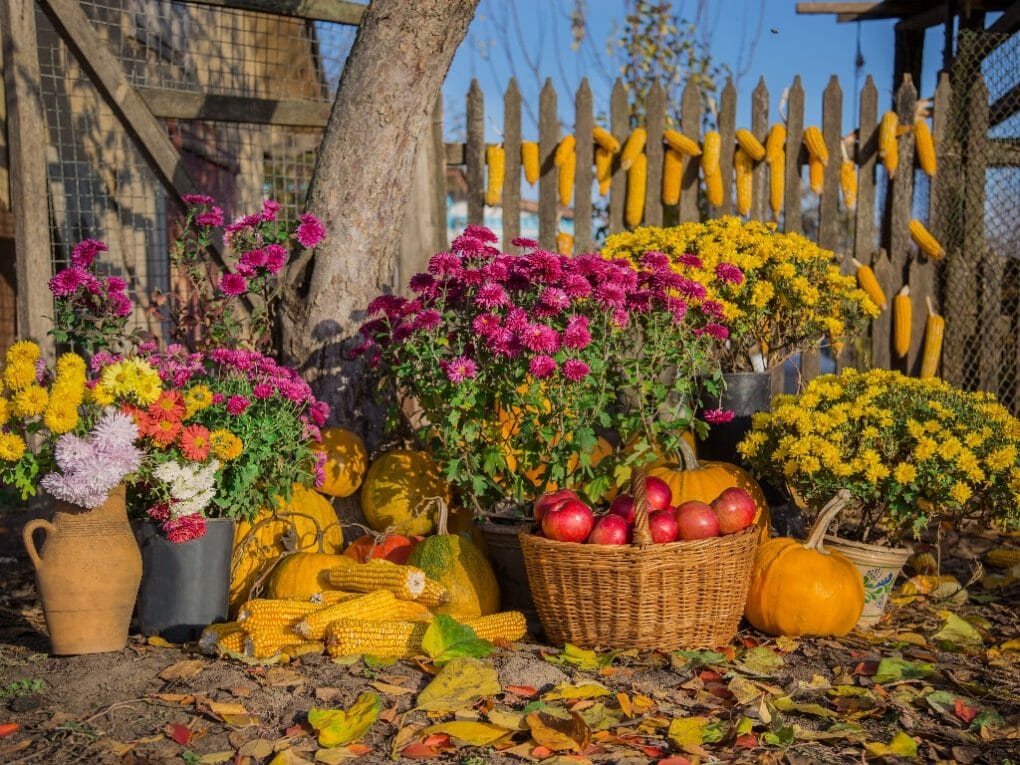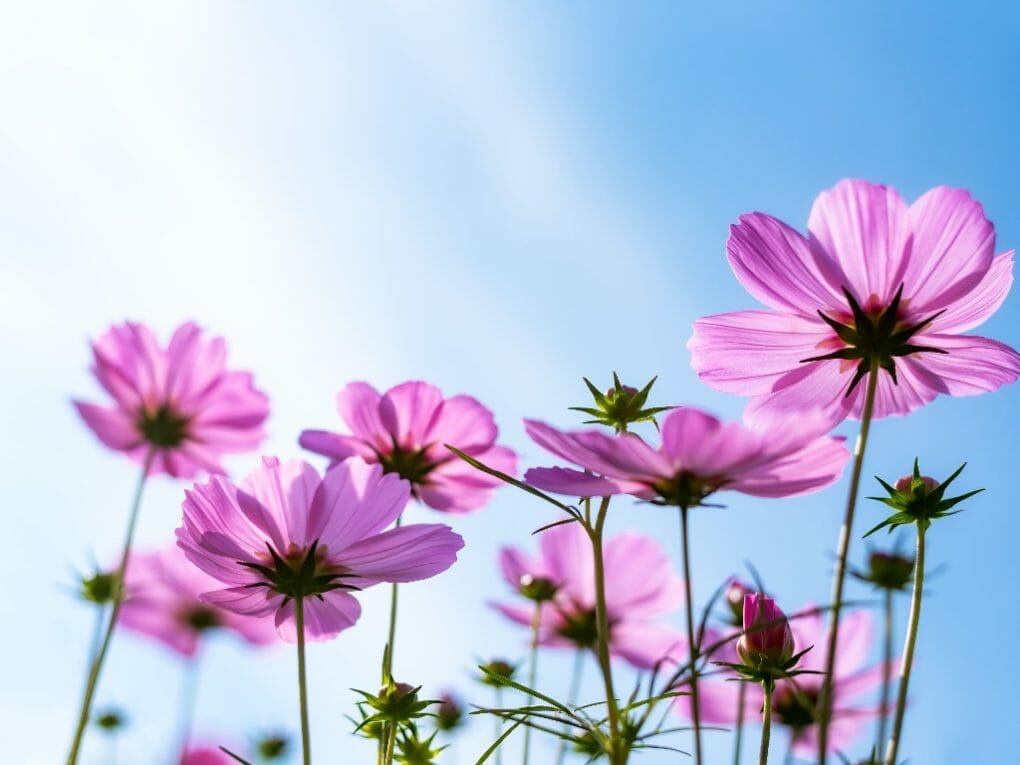Chrysanthemum: Annual or Perennial? What You Need to Know

Although they are typically treated as annuals in the autumn, they can be grown as perennials. Mums will only return if they have enough time to grow roots in the soil before it gets cold. If you plant them in the spring, it’s almost certain that they will come back every year. It gives them time to set up their roots in the soil and keeps them from dying quickly because the soil is too warm.
Therefore, if you purchase them from a grocery store in the fall, keep them in pots and indoors throughout the winter. When the spring plants begin to bloom, and the ground has softened, plant them in the soil and allow their roots to develop.
Chrysanthemums, also known as mums, are popular flowers that produce vibrant blossoms from summer to autumn. As summer draws closer, mums can be found virtually every grocery store. The yellows and reds that bloom from the buds are certain to brighten any gardener’s day.
These prized flowers are simple to cultivate and maintain. These garden gems will return year after year if you plant them at the proper time and under the proper conditions. They only require adequate sunlight, moderate water, and well-draining soil.
Table of Contents
Chrysanthemums Are Perennial Herbaceous Plants
Mums, shortened chrysanthemums, are a popular plant among novice gardeners and those who lack a green thumb. This is because if they are planted early, they will return yearly and require minimal maintenance.
Mums, shortened chrysanthemums, are a popular plant among novice gardeners and those who lack a green thumb. This is because if they are planted early, they will return yearly and require minimal maintenance.
They are native to East Asia and have been used medicinally since approximately the 15th century BCE. There are various types: intermediate, regular, irregular incurve, reflex, quill, spider, and pompon. They all require full sunlight and approximately one inch of water per week to thrive.
These autumn-blooming flowers are renowned for their vibrant hues of yellow, orange, red, purple, bronze, pink, and white. They are a perennial favorite. They thrive in the temperate to cool climate zones 4 to 9.
Mums are the ideal low-maintenance plant because they don’t require annual planting and don’t need special care to grow. Mums are perfect for adding vibrant colors to your front yard or garden that you won’t immediately kill.
Hardiness Zones
USDA Hardiness zones for mums vary based on the specific variety you choose to plant. Two varieties of mums are available for purchase: garden mums and florist mums. Depending on the variety, it can be grown anywhere between USDA hardiness zones 4 and 9.
When deciding whether or not to plant your favorite flowers directly into the soil, it is essential to adhere to the USDA Hardiness Zones. Understanding the zones and planting accordingly will increase the likelihood that your plants will thrive throughout their designated growing season. The plant may perish if you do not adhere to the zoning requirements.
Types of Chrysanthemums

There are typically two types of chrysanthemums when gardeners discuss them. There are two types of mums: garden mums, which are grown in gardens, and florist mums, which can be found in grocery stores and are typically grown by cut flower farmers. Let’s examine each type in greater detail.
Garden Mums
Garden and hardy mums are plants you can plant in your garden and forget about. They produce underground shoots containing stolons that give the plant the nutrients it needs to survive the winter.
They are probably garden or hardy mums if they are planted in the ground. These mums are designed to thrive in USDA Hardiness Zones 4 through 9 and to withstand severe weather conditions.
To maximize the yield of your garden mums, plant them in their final location in the spring. This will prevent them from experiencing extreme cold before their root system has established itself underground. By adhering to this simple rule, your perennial mums will do what they do best and grow each year.
Florist Mums
This variety is commonly found in grocery stores: florist mums. They are more vulnerable than others. The fragile condition of florist mums is due to insufficient stolon production. As mentioned, garden mums produce many stolons that help them survive each year in the soil.
Unfortunately, florist mums produce few or no stolons, decreasing the likelihood that they are perennial flowers. Although they can survive in the wild and reappear annually, they are less likely to do so. They can withstand USDA Hardiness Zones 7 to 9.
Due to their lack of stolon production, florist mums will live longer if kept in a container and protected from frost. They can survive when planted directly in the ground but require a warmer climate or winter protection.
Growing Perennials
As previously stated, mums must be planted appropriately to ensure annual regrowth. Therefore, planting in the spring will ensure their survival throughout the winter.
To plant your mums in time, you will likely need to order them online, as most nurseries and supermarkets do not stock them until autumn.
Dig a hole slightly larger than the mum’s container and insert the root system. Make sure it is not too deep. This is a common error that causes perennial mums to become annuals.
After planting, thoroughly saturate them with water. You may also apply mulch around the plant’s base to retain moisture. Despite their low maintenance needs, they must be watered during the dry months.
Remove the old buds and branch tips the following spring to maintain their health. Thus, the flower concentrates on its root system rather than its dead buds, resulting in a bushier plant. Stop pinching the branches in July to avoid pinching off any new buds.
A second way to maintain their vitality is to provide ample direct sunlight. Plant mums in an area that receives a minimum of six hours of direct sunlight daily. They are less likely to bloom if they do not receive enough sunlight.
Although mums may appear to be dead, it is difficult to tell if it is time for them to begin budding again, and they do not. Therefore, it is essential to exercise patience and not dig up the mum until late autumn, when it is evident that it will not bloom.
Developing as Annuals

Numerous individuals choose to cultivate mums as single-season autumn annuals. Mums are popular fall-blooming flowers, and many front porches feature them during this vibrant season. After the season has ended, they have no further use for them. This is where flowering mums are useful.
Technically, potted or florist mums are perennials. They even resemble resilient mums and share the same scientific name. However, their survival depends on when you acquire them and the local climate.
Once a cool, crisp autumn breeze begins to blow, they can be found in almost any grocery store or garden center. As previously stated, it is too late to plant them in the ground. Unless, however, the climate is sufficiently warm to protect from extreme cold or frost.
After bringing it home, it is best to repot a florist mum as soon as possible. Utilize potting soil with good drainage. This is available at virtually every garden center. The container should be larger than the one the plant arrived in to allow root expansion. You can even include additional flowers for added visual appeal!
When the soil begins to feel dry, water these plants. Do not permit them to wither.
Mums in containers should bloom for approximately two to three weeks. This depends on the outdoor temperature and how far along the blooming process the flowers were when purchased. You may overwinter them indoors and plant them in your garden in the spring after the last frost.
